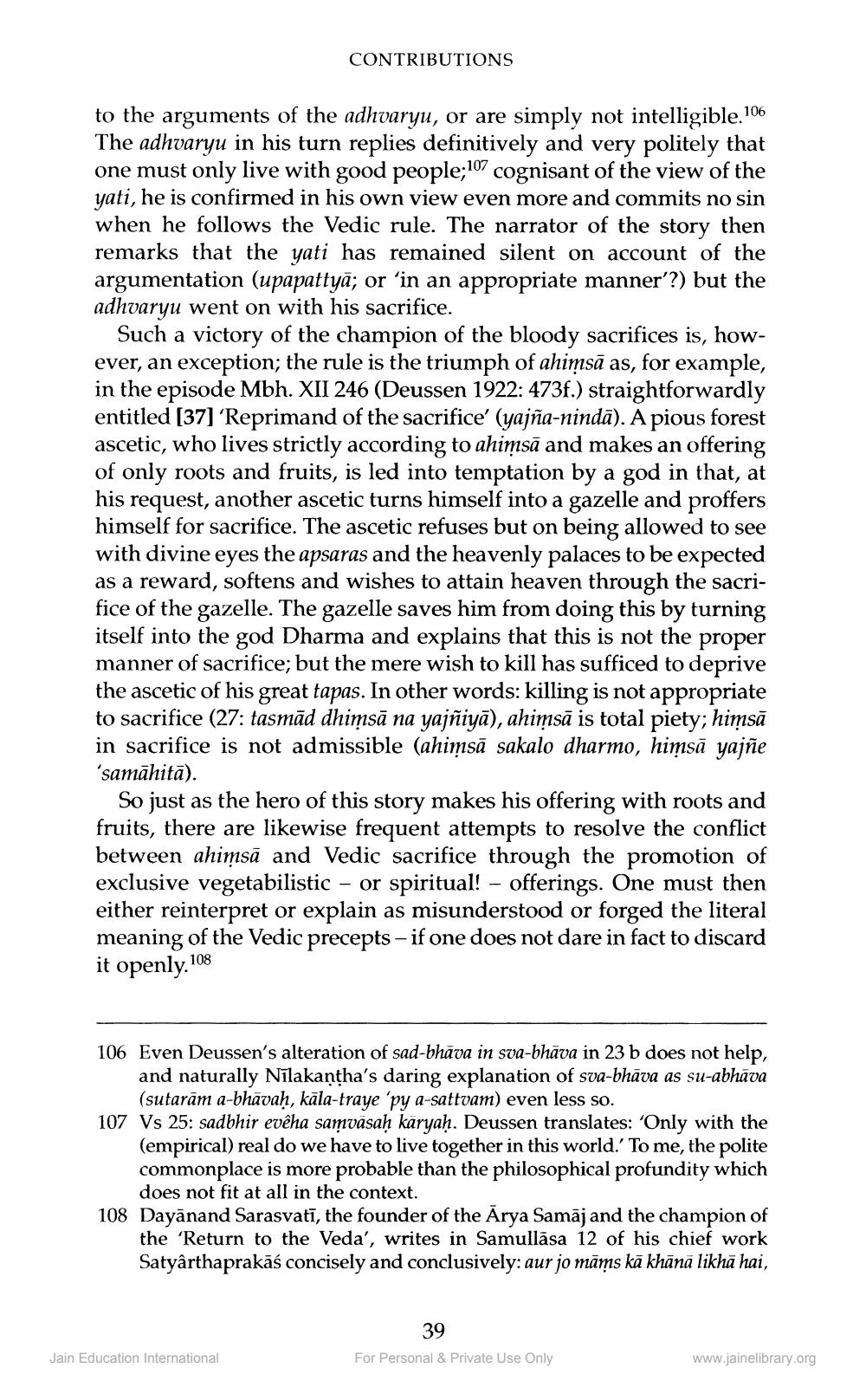________________
CONTRIBUTIONS
to the arguments of the adhvaryu, or are simply not intelligible.106 The adhvaryu in his turn replies definitively and very politely that one must only live with good people;107 cognisant of the view of the yati, he is confirmed in his own view even more and commits no sin when he follows the Vedic rule. The narrator of the story then remarks that the yati has remained silent on account of the argumentation (upapattyā; or ‘in an appropriate manner'?) but the adhvaryu went on with his sacrifice.
Such a victory of the champion of the bloody sacrifices is, however, an exception; the rule is the triumph of ahimsā as, for example, in the episode Mbh. XII 246 (Deussen 1922: 473f.) straightforwardly entitled (37] ‘Reprimand of the sacrifice' (yajña-nindā). A pious forest ascetic, who lives strictly according to ahimsā and makes an offering of only roots and fruits, is led into temptation by a god in that, at his request, another ascetic turns himself into a gazelle and proffers himself for sacrifice. The ascetic refuses but on being allowed to see with divine eyes the apsaras and the heavenly palaces to be expected as a reward, softens and wishes to attain heaven through the sacrifice of the gazelle. The gazelle saves him from doing this by turning itself into the god Dharma and explains that this is not the proper manner of sacrifice; but the mere wish to kill has sufficed to deprive the ascetic of his great tapas. In other words: killing is not appropriate to sacrifice (27: tasmād dhiņsā na yajñiyā), ahimsā is total piety; himsā in sacrifice is not admissible (ahimsā sakalo dharmo, himsā yajñe 'samāhitā).
So just as the hero of this story makes his offering with roots and fruits, there are likewise frequent attempts to resolve the conflict between ahimsā and Vedic sacrifice through the promotion of exclusive vegetabilistic - or spiritual! - offerings. One must then either reinterpret or explain as misunderstood or forged the literal meaning of the Vedic precepts - if one does not dare in fact to discard it openly. 108
106 Even Deussen's alteration of sad-bhāva in swa-bhāva in 23 b does not help,
and naturally Nīlakantha's daring explanation of sva-bhāva as su-abhāva
(sutarām a-bhāvah, kāla-traye 'py a-sattvam) even less so. 107 Vs 25: sadbhir evêha samvāsaḥ kāryaḥ. Deussen translates: 'Only with the
(empirical) real do we have to live together in this world. To me, the polite commonplace is more probable than the philosophical profundity which
does not fit at all in the context. 108 Dayānand Sarasvatī, the founder of the Arya Samāj and the champion of
the 'Return to the Veda', writes in Samullāsa 12 of his chief work Satyarthaprakāś concisely and conclusively: aur jo māms kā khānā likhā hai,
39 For Personal & Private Use Only
Jain Education International
www.jainelibrary.org




